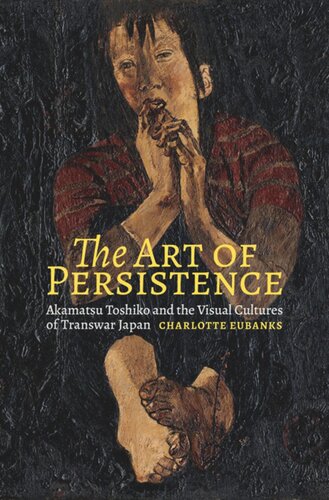

Most ebook files are in PDF format, so you can easily read them using various software such as Foxit Reader or directly on the Google Chrome browser.
Some ebook files are released by publishers in other formats such as .awz, .mobi, .epub, .fb2, etc. You may need to install specific software to read these formats on mobile/PC, such as Calibre.
Please read the tutorial at this link: https://ebookbell.com/faq
We offer FREE conversion to the popular formats you request; however, this may take some time. Therefore, right after payment, please email us, and we will try to provide the service as quickly as possible.
For some exceptional file formats or broken links (if any), please refrain from opening any disputes. Instead, email us first, and we will try to assist within a maximum of 6 hours.
EbookBell Team

4.3
88 reviewsThe Art of Persistence examines the relations between art and politics in transwar Japan, exploring these via a microhistory of the artist, memoirist, and activist Akamatsu Toshiko (also known as Maruki Toshi, 1912–2000). Scaling up from the details of Akamatsu’s lived experience, the book addresses major events in modern Japanese history, including colonization and empire, war, the nuclear bombings, and the transwar proletarian movement. More broadly, it outlines an ethical position known as persistence, which occupies the grey area between complicity and resistance: Like resilience, pesistence signals a commitment to not disappearing—a fierce act of taking up space but often from a position of privilege, among the classes and people in power. Akamatsu grew up in a settler-colonial family in rural Hokkaido before attending arts college in Tokyo and becoming one of the first women to receive formal training as an oil painter in Japan. She later worked as a governess in the home of a Moscow diplomat and traveled to the Japanese Mandate in Micronesia before returning home to write and illustrate children’s books set in the Pacific. She married the surrealist poet and painter Maruki Iri (1901–1995), and together in 1948—and in defiance of Occupation censorship—they began creating and exhibiting the Nuclear Series, some of the most influential and powerful artwork depicting the aftermath of the Hiroshima bombing. For the next forty or more years, the couple toured the world to protest war and nuclear proliferation and were nominated for the Nobel Peace Prize in 1995.
With abundant excerpts and drawings from Akamatsu’s journals and sketchbooks, The Art of Persistence offers a bridge between scholarship on imperial Japan and postwar memory cultures, arguing for the importance of each individual’s historical agency. While uncovering the longue durée of Japan’s visual cultures of war, it charts the development of the national(ist) “literature for little citizens” movement and Japan’s postwar reorientation toward global multiculturalism. Finally, the work proposes ways to enlist artwork generally, and the museum specifically, as a site of ethical engagement.